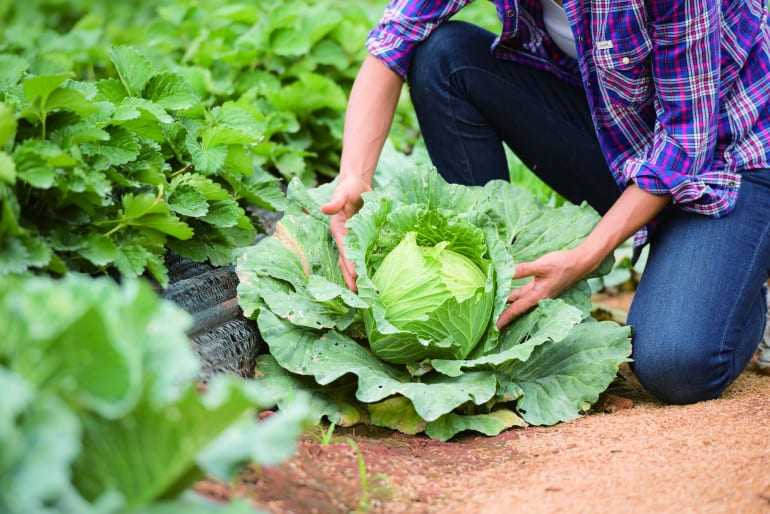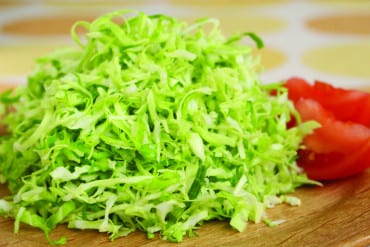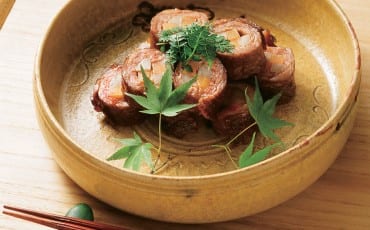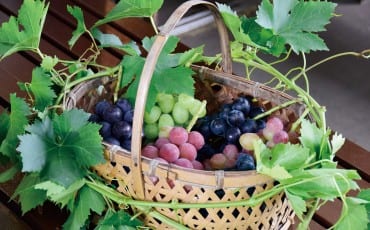Articles
Recipes
May 1, 2019
Cabbage in every way
You may not know it but Japanese cabbage comes in many varieties: spring, summer (found in cooler climates like Hokkaido) and winter. Today, I am sharing more on spring cabbage, which is softer and fluffier.

To choose the right spring cabbage, pick it up. The lighter it feels, the better it is. Also, gently squeeze the cabbage to feel the “space” between the leaf layers. There should be more “space”, hence air, to indicate that the vegetable is very fluffy. Lastly, choose a brighter yellow-green one as it will be sweeter and juicer.
On the contrary, winter cabbage should feel heavy in your hand and it should have a light green colour.
Cabbage is rich in vitamins C and K, as well as the lesser-known vitamin U, which is said to help with acid reflux and gastric ulcers.
As cabbage is so nutritious, do not overcook it or it will lose its vitamins. Instead, eat it raw in a salad. Soak the leaves quickly in cold water to make them crisp, but don’t oversoak them or the nutrients will leach into the water.
There is a simple and popular Japanese recipe for cabbage salad: Just chop the leaves finely and drizzle salad dressing over them. This is usually eaten with a fried meat dish like tonkatsu.
I have also shared a recipe for spring cabbage coleslaw. Mayonnaise is often used as a dressing in coleslaw, but I did not use any because I wanted the natural flavour of the cabbage to stand out. I chose grapefruit and corn as the ingredients in this salad because the sweetness of corn, the sourness of grapefruit and the freshness of cabbage make such a lovely combination.
Cabbage is suitable for soups as its nutrients will seep in. But throw in the leaves of the softer spring cabbage only at the last minute, so that they don’t turn mushy.
Or try my recipe for simmered clams with cabbage. In Japan, clams are in season in spring. If you buy konbu (kelp) as a sheet in its entirety, cut it into thin strips before adding them to the pan. So as you can see, cabbage is truly a versatile and interesting vegetable to work with!
Shredded cabbage

Ingredients
Japanese spring cabbage, as much as you require
Directions
1. Peel off as many cabbage leaves as you need.
2. Remove the core of the leaves with a kitchen knife. Cut the leaves into halves, length-wise.
3. Lay two pieces flat on top of each other and roll them up together.
4. Press down on the leaves and chop finely.
5. Soak in cold water for
2–3 minutes, then drain excess water in a colander.
(Text PEARLYN THAM / Recipes COCOPELLI)
About Mikiko Mogami
Mikiko Mogami is a renowned Certified Professional Vegetable Sommelier and Athlete Food Meister from Akita Prefecture. She creates menus and advises athletes on their nutritional needs when they are competing. Mogami is a keen advocate for including more vegetables in our diet and regularly contributes articles on the subject. She also presents lectures and conducts TV and radio interviews. Her motto is to help everyone enjoy vegetables and eat well. Mogami works with Cocopelli, a brand that promotes produce from Akita Prefecture to the rest of Japan. She helps to creates recipes that showcase the wholesome products. All Cocopelli products are carefully selected to reflect the beliefs and passions of the people who produce them.
Website: http://azuma-trading.co.jp/cocopelli








